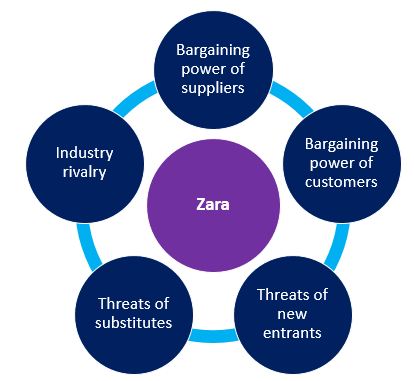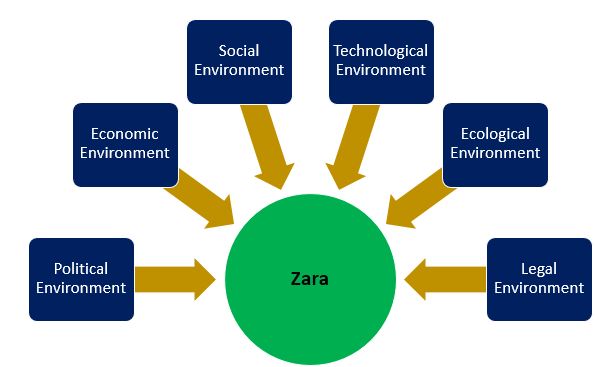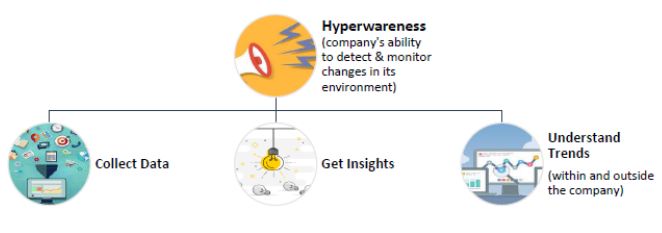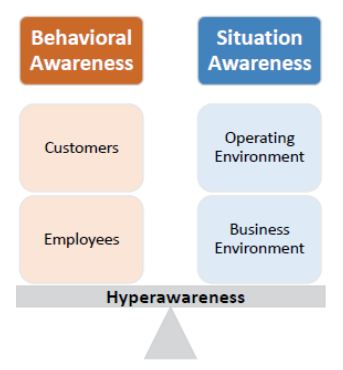Contents in this Page
Introduction
The Digital Transformation Strategies of Zara will be evaluated in this blog, including the factors influences the company to change. The digital transformation through which Zara is going through, threats of the transformation and objectives of the transformation will be evaluated in this report. The techniques of capturing macro-trends and competitors will also be evaluated. In the last part, two models have been suggested through which Zara can take the fast decision to adapt to quick changes in the market.
You may also feel interested to read below blogs:
Roles of Management Accounting Systems (MAS)
Knowledge Management Information System at MC Donald’s
How a Mental Health Nurse contributes to Social Care
Why Nokia Failed
Impact of UK Legal Framework on HRM
The Factors Fostered Zara’s Digital Transformation
The COVID-19 pandemic discouraged people from going out shopping, and as a result, online shopping increased by 95% within this April; it encouraged Zara to focus on its online service and close 1200 of its stores (The Guardian, 2020). The threats that obliged Zara to transform digitally are analysed below.
The most significant threat for Zara could be the declining income of householders (due to COVID-19) in potential markets where Zara operates (Majumdar, Shaw, & Sinha, 2020). This will result in a lack of consumer confidence which will decrease fashion product consumption. As a result, sales of Zara will be negatively affected if the company does not decline the prices of its fashion products, keeping the quality and variations the same as now. This is a major threat which is likely to seriously affect the sales of Zara.
Another potential threat for all retail brick-and-mortar giants is that they have already experienced decreasing number of customer footprints at their stores because of COVID-19 (Barua, 2020). This implies that customers will grow a habit of shopping online instead of physically going to stores. This will create significant threats for conventional retailers, such as Zara, with more emphasis on physical stores.
Finally, competitors such as H&M, Uniqlo etc., have already established their prominent presence on digital platforms (The Guardian, 2020). All of the competitors are offering the same types of products, and Zara will face difficulties in surviving without differentiating digital technologies.
Considering the above threats, Zara has decided to invest around 1 billion to increase online sales (Bloomberg L.P, 2020). This is a significant digital transformation for Zara, which aims to reduce product prices through saving from the rent of 1200 stores, to make convenient alternative solutions for tech-savvy online shoppers, and to cope with changing business landscape.
How to capture competitor’s insight: Porter’s Five Forces Model
The below diagram shows Porter’s five forces model. Dobbs (2014) has shown that Porter’s five forces model is one of the most effective tools that companies can use to capture competitors’ insight. The model will help Zara to identify the position of its competitors by analysing the threats of new entrants, substitutes, suppliers, buyers and competitors; therefore, it should adopt the model. For instance, threats of competitors will show how Asos, H&M and other competitors are growing, which will encourage Zara to be proactive to make its own position among all competitors (The Guardian, 2020). Criticism of Porter’s five forces model is the result is too short-sighted, and Zara can miss significant factors while evaluating its competitive position.

How to capture macro-economic trends-PESTLE Analysis:
The below picture of PESTLE is on PESTEL. Zalengera et al., (2014) have stated in their research that PESTLE (stands for Political, economic, social, ecological, technological and legal environment) is the framework through which companies can understand the macro-economic trends.

To capture the macro-environment of the company, Zara should conduct a PESTLE analysis. For example, a political analysis of Zara will inform them about the influence of political factors such as Brexit will set trade borders between the EU and UK, which will affect the company’s operations (Fashion United, 2020). Therefore, it will help Zara to understand the impact of the factor and will get the scope to become ready for the situation to minimize the consequences. By analysing the economic environment, Zara will realize the impact of economic factors on their business, such as clothing sales declining to 34%, which shows a reduction in the company’s profit (BBC, 2020). The company will be able to make an effective plan to overcome the economic crisis and increase its profit level. Ecological environment analysis will help Zara to understand their impact on the environment as fashion industries make a huge amount of waste within a single day, and Zara will be capable of identifying its impact on the environment (Forbes, 2020). As a result, their reputation will increase. The drawback of the model is PESTLE only focuses on six external environments ignoring other important factors that may affect Zara its operations.
Capturing macro-economic and competitive trends:
To respond effectively and quickly to the competitive and changing forces, companies have to be agile, speedy and fluid in the age of digital disruption (Udovita, 2020).

A company which is an agile and quick response to external forces are called a hyperaware company which collects market data, gets insights and understands the trends (above-stated figure). Being hyperaware is a must-have quality to capture macroeconomic and competitive trends.

The pictogram shown in the figure implies that Zara should critically assess behavioural awareness (employees, customers); and situational awareness (business environment, operational environment).
Listening to customers and applying of digital technologies to gather big data from customers, and application of AI to analyse and make decisions can contribute greatly to a company (Neubauer, Tarling, & Wade, 2017). For example, Zara gathers potential information on customers’ preferences through sales staff, and they use cloud computing to let product designers have those market insights (Topic Workbook 2). Zara could use AI to analyse those data to have a better insight into the data.
Understanding customers’ hidden pattern is the key to knowing changing preferences of customers’ behaviour (Shan et al., 2020). Zara should use AI to investigate the social media feed to know customers’ preferences regarding style, designs, colours of clothing. This will help Zara to know customers’ changing purchasing patterns and will make Zara behaviourally aware.
A company needs to grow situational awareness which includes knowing the business and operational environment (Stonehouse & Konina, 2020). Zara should know deep details of the customer ecosystem, should implement social media listening, and establish real-time supply chain management. For example, Amazon has a software system which continuously scans the prices of competitors online and make price changes to Amazon millions of time a day (Topic Workbook 2). Zara can also follow a similar pricing strategy to stay ahead of the competition.
The operational environment (physical environment, infrastructure, IoT) also plays a major role in growing situational awareness (Vidas-Bubanja & Bubanja, 2017). Zara should utilize the benefits of IoT to effectively manage thousands of stores, online shops, and suppliers. For example, Cisco introduced an IoT solution called “Zero Downtime” on factory floor for operational efficiency. Zara could follow similar strategies in its warehouses.
Approaches to making fast decisions:
Effective and agile decision-making requires a company to make implement an informed decision-making approach (Park & Datnow, 2017). An informed decision-making approach helps a company to engage the right people and the right strategies beforehand so that a company can make a quick decision.

The figure shows that inclusive decision-making and data-driven decision are the keys to making informed decisions which can be implanted quickly.
A company should have the right mix of internal and external people right collaboration and should remove unconscious biases to ensure informed and effective decisions (Park & Datnow, 2017). Zara should deploy the right mixture of people from internal sources. To avail of this, it can get help from software to determine the right people for specific decision-making teams. Secondly, the use of email in making a fast decision is no more an effective method (Kurilovas, 2020). Therefore, Zara can use more advanced communication channels, such as Microsoft Teams, Slack, Whatsapp etc., to make the effective communication. Finally, Zara should eliminate unconscious biases which a team can have. Elimination of biases will help Zara to make effective decisions in a timely manner.
Emphasis on data-driven decisions will significantly help a company to move quickly and make the right decisions (Hora, Bouwma-Gearhart, & Park, 2017). Zara should collect a huge volume of data on its regular operations, from competitive forces and from customers. It should apply AI to analyse and interpret those data for making timely strategic and daily decisions. For example, IBM applies AI to extensively analyse the business partners and competitive forces to make the right M&A decision. Zara can also apply a similar strategy to make proper supplier selection in its supply chain. Data-driven sales and marketing decision leads to make customers think that each of them is specially treated (Ludbrook et al., 2019). For example, EasyJet tailors its messages based on the geographic profiles of each customer. As a result, customers feel very special in regard to EasyJet. Zara also has similar data from customers. It can also tailor the messages to its customers to grow a high level of customer satisfaction.
Conclusion:
The changing competitive landscape of the fashion industry has obliged Zara to make a number of strategic changes in the age of digital transformation. Being hyperaware is necessary to be agile and responsive to the competitive environment. Zara should make an informed decision to quickly make decision.
References:
B2U, (2020). Scanning the Environment: PESTEL Analysis. Retrieved from: https://www.business-to-you.com/scanning-the-environment-pestel-analysis/ [Assessed on: 09 August 2020]
Bloomberg L.P, (2020). Zara’s Latest Fashions Will Be a Post-Covid Hit. Retrieved from: https://www.bloomberg.com/opinion/articles/2020-06-10/zara-s-online-shopping-strategy-could-be-a-hit [Assessed on: 08 August 2020]
BBC, (2020). Coronavirus: Why the fashion industry faces an ‘existential crisis’. Retrieved from: https://www.bbc.com/news/entertainment-arts-52394504 [Assessed on: 08 August 2020]
Forbes, (2020). Zara Reveals Ambitious New Sustainability Goals. Retrieved from: https://www.forbes.com/sites/celiashatzman/2019/07/18/zara-reveals-ambitious-new-sustainability-goals/#653621557075 [Assessed on: 08 August 2020]
Fashion United, (2020). What does a hard Brexit mean for fashion companies. Retrieved from: https://fashionunited.uk/news/business/what-does-a-hard-brexit-mean-for-fashion-companies/2019032942450 [Assessed on: 08 August 2020]
GOV.UK, (2020). Accepting returns and giving refunds: the law. Retrieved from: https://www.gov.uk/accepting-returns-and-giving-refunds [Assessed on: 08 August 2020]
The Guardian, (2020). Zara owner to close up to 1,200 fashion stores around the world. Retrieved from: https://www.theguardian.com/business/2020/jun/10/zara-owner-to-close-up-to-1200-fashion-stores-around-the-world [Assessed on: 08 August 2020]
Vidas-Bubanja, M., & Bubanja, I. (2017). The challenge of going digital. Journal of Engineering Management and Competitiveness (JEMC), 7(2), 126-136.
Visual Paradigm, (2020). Porter’s Five Forces Analysis Tutorial. Retrieved from: https://www.visual-paradigm.com/tutorials/five-forces-analysis-tutorial/ [Assessed on: 09 August 2020]
